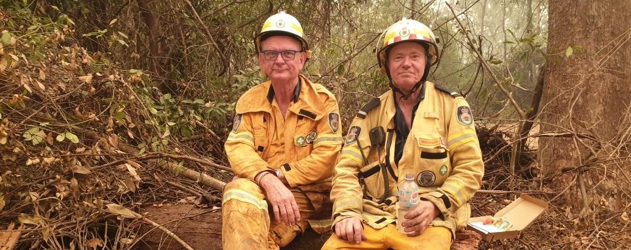Having just spent two weeks talking to people directly involved in Australia’s serious bushfires (Victoria and New South Wales), I see an obvious disconnect between those in the ‘frontline’, and the daily bleating of the ‘metropolitan choir’ singing from the hymn sheet of Climate Change Catastrophists.
Victoria
I was taken on a tour of the Fern Tree Gully Reserve, another tinderbox for the next fire event.
Concerned local citizens suggested that their local government conduct an immediate clean-up of fallen trees and the many years of dead brush that are currently blocking creek beds. To any rational individual this seems to be a sensible thing to do right now (after having been warned previously at the outset of the latest bushfire crisis).
“Oh no,” the local government dark greens say ― “these fallen trees and branches must return to nature and decompose over the next several thousands of years.”
The previous occupiers of the national reserves treated these areas as their ‘local economy’ and knew how to protect lives and property by back-burning and clean-ups – unlike our current university educated bureaucrats.
A friend of mine, a respected engineer, offers his explanation for our current bushfire below:
“Basically, to have a bushfire one needs to have 3 ingredients:
– fuel load
– dry atmosphere
– wind
If any of these are missing, there can be no running fire.
As we can see the outside temperature doesn’t matter and a bushfire can be equally ferocious at 23 deg. C as at 43 deg. C. So not sure what climate change has to do with all this apart from suitably scaring the population and helping some people promote their agenda.
Oh, and then there is this little detail required to have a fire – the ‘spark’.
If we choose to sit outside on a sunny day and 43 deg C temperature and watch the grass, hoping to catch fire, we would be there for a very long time.
The spark can come from various sources. Electrical faults, cigarettes thrown out of cars, magnifying glass effect due to clear bottles being thrown out of cars, controlled burn-outs done at the wrong time and going rogue and, of course, my favourite culprit – pyromaniacs.
Recently The Australian suggested that over 180 people have been charged with lighting fires on the east coast alone. If we assume that only 20% get caught, we have close to 1000 people potentially running around threatening lives and causing damage. If done on a dry and windy day in an area full of fuel load we have no hope.
Regarding the fires, our friends the Aboriginal people have certainly seen it all before. See the photo below taken this year in comparison to their flag.”

New South Wales
In New South Wales I interviewed my friend Julian Malnic who had only just returned from an another fire fighting stint with his Brooklyn Fire Brigade.
In January 2007, Julian lost his own home in the bushfire at Frenchs Forest and this memory has been deeply etched into his mind.
He, and fellow fire brigade member Brad Townsend, pictured below, were battling fires at Narooma and Bega in southern New South Wales.

A previous crew had just lost a truck, through an unfortunate roll-over, but carried on their duties with a ‘borrowed’ fire truck. Amongst the many volunteers currently at work on the frontline is our former Prime Minister, Tony Abbott, a member of the Davidson Brigade.
Julian’s personal experience with home loss adds the weight of experience to his words:
“Saving a house in the bush is quite straightforward. We don’t put the fire out. We just keep the house unburnt until the fire has moved past.
But how do you find the houses? That can be the tricky part in the smoke.
Forces get thinly spread in big blazes and which houses are saved is sometimes as fluky as which street or track we turn down.
I have been doing it for about nine years but at the Wyndham fires the best thing we had on the truck was some very experienced firefighters.
The decision to stand and defend or to clear out can be a big one. I feel gratitude for the things they taught me at Wyndham. Just by how they called the fire and how they decided our response.”
In discussing my Fern Tree Gully (Victoria) visit with Julian Malnic, he commented:
“Seeing you comment about fuel loads Ron, I would say this. If you have heavy fuel loads something is always going to ignite huge fire. Lightning, car accidents, industrial events and as you point out, arson.
The concept of the National Park seems to me a very poor colonist’s idea. The Aboriginal word for National Park used to be ‘home’. They lived there every day, and they burnt every day they could, small cool fires. But they were relocated out of these new areas called National Parks. I have the feeling we have just burnt the biggest fuel load since they got here 65,000 years ago.
The loss of animals is on an unimaginable scale. And, they were lost in the name of saving them, in the name of National Parks where they were being kept ‘safe’.”
There is work yet to do and all these firefighters deserve our support and admiration.
For my earlier comments on the bushfire crises, please refer to my previous articles here.
Below is a recent recording by Rupert McCall of his poem Green & Gold Malaria, re-recited here in honour of Australia’s unconquerable firefighters.
